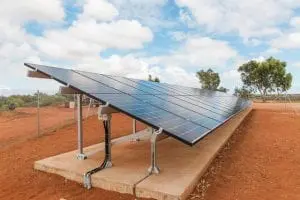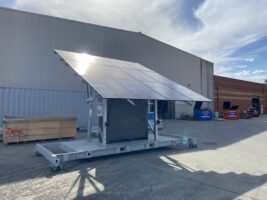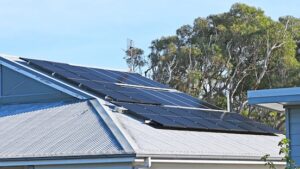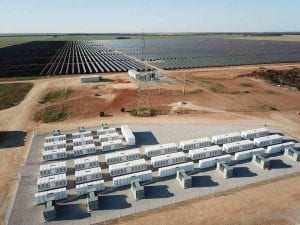Community renewable energy has significant political and economic benefits, but is often hindered by five major barriers. Read on for a summary of the five barriers, watch them in a 17-minute presentation, or check out the vividly illustrated slideshow.
Barrier one is tradition. Utilities are simply used to operating a grid in a 20th century model, where large-scale power plants are connected in a top-down, one-way grid to power consumers. Policies that have allowed for on-site solar and wind generation, for consumers to be instead producers, have nibbled at the margins of this tradition. It’s only in the past year that utilities have realized how low-cost solar power can fundamentally up-end their entire business model. And the response has often been to entrench.
A second barrier facing community-based renewable energy is capital – upfront cash to buy a solar array or wind turbine. And the biggest cause is securities law and regulations, intended to prevent fraud like perpetrated by Bernie Madoff and others, that makes pooling capital very difficult for groups of interested local power investors. The federal or state rules often come with high compliance costs or significant limitations that hinder most efforts to raise community capital.
A third barrier is cash flow. American renewable energy policy is a byzantine array of tax incentives, rebates, and bill credits that can challenge a CPA. Figuring out how to pool all these revenue streams together to make a project with reasonable payback is a significant challenge.
A fourth barrier is legal, because of the mis-match between federal renewable energy incentives paid through the tax code and the non-taxable status of many of the logical entities for organizing community renewable energy projects. Want to use a city, county, cooperative, or non-profit structure for your community solar project? Then you may have to forgo the 30% federal tax credit. A level playing field for energy cooperatives is a major reason the Germans have such high levels of local ownership of their 63,000 MW renewable energy economy.
Finally, utilities themselves (as implied in #1) have acted as barriers to more community-based renewable energy. In particular, policies like the “15% Rule” have set artificially (and arbitrarily) low limits on distributed generation under the guise of system safety.
The good news is that the barriers are being broken. Tradition has been tossed as utilities have had to grapple with state policies encouraging distributed generation and solar power and others have embraced pro-active measures to accommodate more local renewable energy. Crowdfunding opportunities like those offered by Mosaic are giving people an unprecedented opportunity to pool their money to go renewable. The falling cost of solar is rapidly making incentives unimportant in many areas, reducing the problems caused by half baked, tax-based federal policy.
Most importantly, utilities, regulators, and policy makers are recognizing that the 20th century model of concentrated power and capital doesn’t serve a distributed, 21st century grid. And as that aging paradigm crumbles, community renewable energy will grow up through the cracks.










